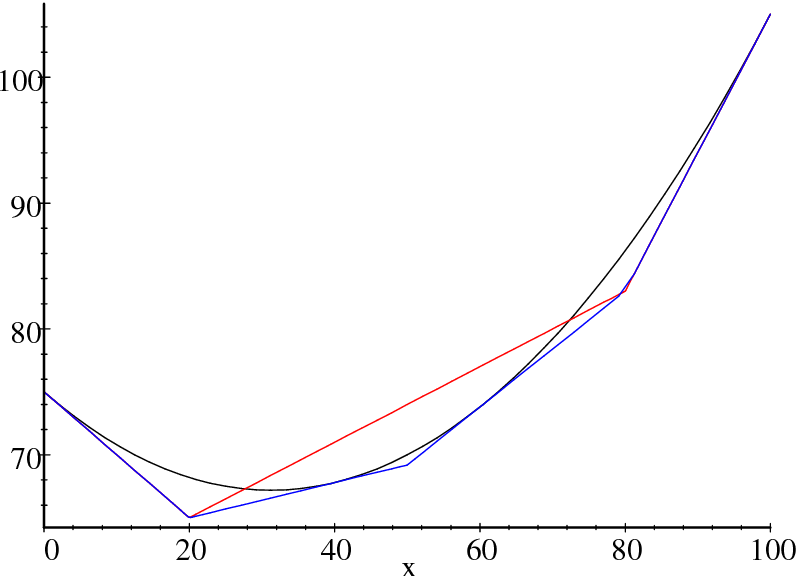A Tutorial on Stochastic Programming by Shapiro
A tutorial on stochastic programming by Shapiro provides an overview of the basic ideas of this popular technique. This book focuses on multistage stochastic optimization, with particular emphasis on a certain point of view. While it does not provide a comprehensive overview of the subject, the book does present many of the more technical details. The result is a book that is suitable for a wide range of readers.
Optimal first-stage decisions
Optimal first-stage decisions in stochetastic programming are the decisions that lead to the smallest cost over a period of time. During the stochastic process, the objective function has a variety of realizations, each of which has a different probability of being realized. The optimal first-stage decision determines how many possible outcomes are expected, and is the optimal solution to the problem.
A decomposition technique is used to represent the decision as a set of scenarios. In stochastic programming, the first-stage decision is called the NAC. The NACs represent realizations of uncertain parameters. In the scenario tree, each decision is represented by a different NAC. The NACs are based on the decision and are conditionally added to the scenarios. If the initial NAC is the same as the final NAC in a scenario, the second-stage decision is also the same.
Probabilistic constraints
In the world of optimization, probabilistic constraints are an important part of decision-making. These constraints constrain the optimal solution under specified conditions, such as the probability of an event occurring. These constraints are often referred to as chance constraints or stochastic constraints. In some cases, probabilistic constraints can limit the solution space. In such a case, there is no optimal solution, but rather a solution that fulfills the constraints.
Typically, stochastic programs involve endogenous uncertainty. These uncertainties are characterized by their independence from decisions, while others are decision-dependent. In stochastic programming, there are two types of uncertainty: exogenous and endogenous. The literature distinguishes between Type 1 and Type 2 endogenous uncertainty. Depending on the level of uncertainty, the probabilistic constraints used in stochastic programming can be either continuous or discrete.
Responsiveness
The role of responsiveness in stochastic programming is becoming increasingly important in the PSE community. In this article, we will give an overview of stochastic programming and summarize recent contributions. We will also refer to several review papers that provide further insights into this field. In addition to providing a high-level overview of stochastic programming, this article will also provide an example of stochastic programming that incorporates responsiveness.
Recent advances in the field have had far-reaching implications. Recent contributions cover risk measures and distributionally robust optimization. This special issue features papers on risk measures, scenario generation and scenario reduction, as well as asymptotic analysis and rates of convergence. The papers also consider a wide range of applications. The authors’ main research interests revolve around these topics. In addition to applying stochastic programming to many fields, they also examine how to evaluate the performance of strategies using data from large-scale financial institutions.
Generalized Benders decomposition
In stochastic programming, the Benders decomposition is a technique that can solve the capacitated network design problem with demand uncertainty. This problem has many applications and has been tackled in the literature using both exact methods and meta-heuristics. Still, many benchmark instances remain unsolved, and this method is especially useful for moderate-sized benchmark instances. In addition, Benders decomposition can be accelerated using cutting planes, partial decomposition, or warm-start strategies. The proposed strategies are evaluated computationally to determine the efficiency of the method.
The Benders decomposition method uses an iterative procedure to choose successive values of y. However, the benders cuts are not considered in the inner problem, but instead are used to form cut constraints in the maximization problem. The benders cuts are added to the master problem until no more cut can be generated. This technique is also known as row generation. It can be applied to stochastic programming problems where the y is fixed, but the variables are not.
Two-stage stochastic mixed-integer nonlinear program
The two-stage stochastic mixed-intener program is the result of a decision-making process that involves observing data realizations and then taking action. Optimisation on the average is justified under several conditions. For example, if a stochastic process has a known probability distribution, optimization on average can be justified by the law of large numbers. In other cases, stochastic processes can have unknown distributions, which makes the optimization on average justified.
A generalized version of this program is Eq. 1. The mixed-integer stochastic program is an extension of Shapiro’s two-stage method. It combines integer and continuous variables. The first stage consists of binary decisions, while the second stage consists of continuous decisions. Both stages of the program have bounds on the total number of facilities. The uncertainty in this problem relates to the demand values of the various locations, which are sampled from a finite distribution.

